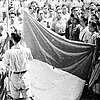Kalimantan Physical Revolution
| Kalimantan Physical Revolution | |||||||
|---|---|---|---|---|---|---|---|
| Part of Indonesian National Revolution | |||||||
| |||||||
| Belligerents | |||||||
|
|
| ||||||
| Commanders and leaders | |||||||
|
|
| ||||||
Kalimantan Physical Revolution was series of conflict between Indonesian nationalist in Dutch Borneo following Japanese occupation of the Dutch East Indies and Proclamation of Indonesian Independence by Sukarno. After surrender of Japanese at the end of World War II, allied forces retake control of Dutch East Indies including Dutch Borneo from Japanese. Return of Dutch authorities however, rejected by majority of native population including in Borneo, later resulting in bloody conflict between Royal Netherlands East Indies Army and various armed militias & insurgencies across the archipelago. Allied military forces in Borneo was in safe position, being able to pacify most of nationalist uprising and impose a blockade to prevent military aid from Java and Sumatra and prevent nationalist to flee from Borneo and infiltrating from Java.[1] Later, several nationalist of Borneo-descendant was able to breach the military blockade to provide information of what is happening in Java and Sumatra, and declaring Kalimantan as inseparable part of republic, known as Kalimantan proclamation.[2][3][4]
Background
Borneo was home to several native sultanates such as Sultanate of Banjar, Kutai, and Sultanate of Bulungan.[5] Prior to 18th and 19th century, the Dutch began to intervene in internal matters of native sultanates, resulting conflict between the two. The most notable was Banjarmasin War, resulting in Dutch authorities eliminating most of royal institutions and declaring the sultanate cease to exist after 1863. Dutch control over the island remained weak and mostly handed over local authorities and royals that are supporting Dutch colonial establishment.[6]
Indonesian nationalism or concept of Indonesian nation didnt exist in mind of Borneoan natives until early 1900s when Indonesian National Party establish branches across the island and recruiting natives, later followed by Youth Pledge. Occupation by Japanese later fueled nationalist sentiment between natives to crucial level, in addition to giving them military training later used against allied forces.[7]
Kalimantan Proclamation 17 May 1949
As of 17 May 1949, Hasan Basry declared Kalimantan as integral part of Indonesian Republic and oppose any act to separate Kalimantan from Indonesian Republic. The proclamation was read on Kandangan and later printed & circulated around Banjarmasin and Pontianak. Prior to declaration, Dutch authorities send an ultimatum to Hasan Basry and his followers to surrender.
“PROKLAMASI“
MERDEKA, DENGAN INI KAMI RAKYAT INDONESIA DI KALIMANTAN SELATAN, MEMPERMAKLUMKAN BERDIRINYA PEMERINTAHAN GUBERNUR TENTARA DARI “ALRI” MELINGKUNGI SELURUH DAERAH KALIMANTAN SELATAN MENJADI BAGIAN DARI REPUBLIK INDONESIA, UNTUK MEMENUHI ISI PROKLAMASI 17 AGUSTUS 1945 YANG DITANDATANGANI OLEH PRESIDEN SOEKARNO DAN WAKIL PRESIDEN MOHAMMAD HATTA. HAL-HAL YANG BERSANGKUTAN DENGAN PEMINDAHAN KEKUASAAN AKAN DIPERTAHANKAN DAN KALAU PERLU DIPERJUANGKAN SAMPAI TETES DARAH YANG PENGHABISAN.
TETAP MERDEKA !
KANDANGAN,17 MEI. ATAS NAMA RAKYAT INDONESIA DI KALIMANTAN SELATAN
GUBERNUR TENTARA
HASSAN BASRY
English version:
"PROCLAMATION"
MERDEKA (FREEDOM),
WITH THIS WE PEOPLE OF INDONESIA IN SOUTH KALIMANTAN REGION REQUEST THE ESTABLISHMENT OF A MILITARY GOVERNOR UNDER THE INDONESIAN NAVY, INCLUDING ALL THE SOUTH KALIMANTAN REGION, TO BE PART OF THE INDONESIAN REPUBLIC, TO MEET THE CONTENT OF 1945 INDEPENDENCE PROCLAMATION SIGNED BY PRESIDENT SOEKARNO AND VICE PRESIDENT MOHAMMAD HATTA. CONCERNING THE TRANSFER OF POWER WILL BE MAINTAINED AND IF NEED TO BE STRUGGLED TO A DROP OF BLOOD THAT DRIVES.STAY INDEPENDENT!
KANDANGAN, 17 MAY
IN THE NAME OF THE INDONESIAN PEOPLE IN SOUTH KALIMANTANMILITARY GOVERNOR
HASAN BASRY
Citations
- ^ a b "Proklamasi Kalsel: Pejuang Banjar Mendirikan Pemerintahan Militer". tirto.id (in Indonesian). Retrieved 2020-10-04.
- ^ Riwut, Tjilik (1958). Kalimantan Memanggil.
- ^ Sejarah Kalimantan, Departemen Pendidikan & Kebudayaan
- ^ Hassan Basry , H. Kisah Gerila Kalimantan (Dalam Revolusi Indonesia) 1945–1949 [ Guerrilla Stories of Kalimantan (During the Indonesian Revolution ) 1945–1949 ].
- ^ Ideham, S., et al. 2003. Sejarah Banjar. Banjarmasin: Badan Penelitian dan Pengembangan Daerah Propinsi Kalimantan Selatan.
- ^ [1]
- ^ Post-war Borneo, 1945-50: Nationalism, Empire and State-Building
- ^ klikkalsel.com (2019-05-17). "Mengenang 17 Mei, Proklamasi Rakyat Kalimantan". Klikkalsel.com (in Indonesian). Retrieved 2020-10-04.

